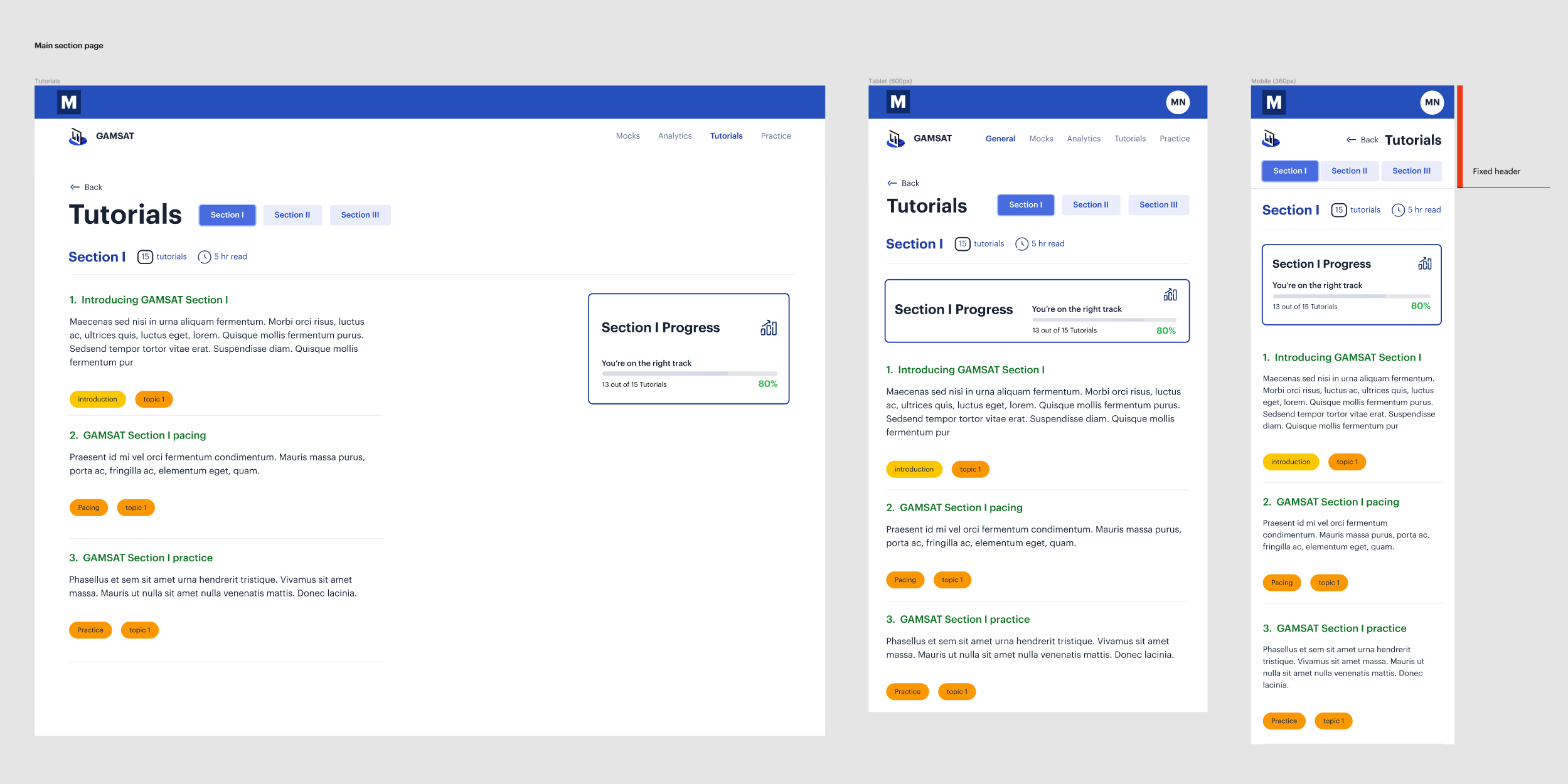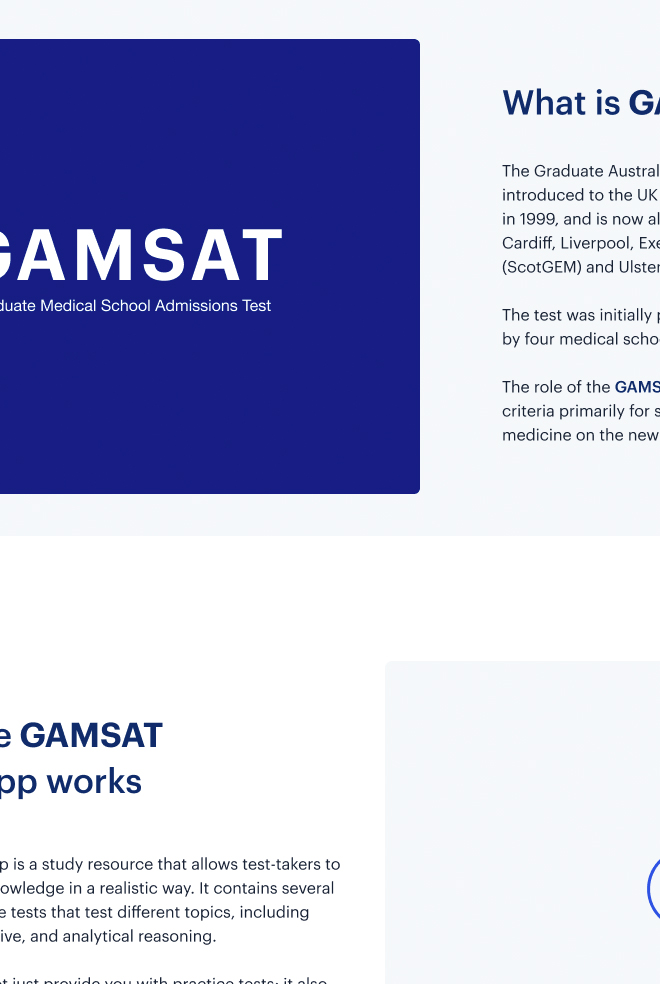
Medify is a practice platform used by students studying for a UCAT or BMAT exam.
Company
Medify currently offers UCAT and BMAT mock exams for students to improve their study habits and maximize their exam performance, including detailed study guides and interactive exercises. Students can create their own accounts to track their progress, receive personalized recommendations, and discover helpful resources like blog posts and video tutorials. The GAMSAT app is fully responsive.

The project
The GAMSAT study app being created by Medify was to be offered to students from all over Australia, New Zealand and the UK as an alternative to taking the real test. The aim of this project was to help students achieve higher scores on the GAMSAT exam by providing a variety of interactive exercises and tests that would help them self-assess and identify weak spots in their studies. Students would receive greater confidence before taking the exam because they knew what they had to do to succeed.
Research
I began by doing research on https://acer.edu.au which offers the gamsat exam to get a full understanding of how the exam is constructed and broken down into different sections.
Acer's website provides an overview of what is covered in each section of the exam, as well as examples of questions from each section. This helped me gain an understanding of how each section worked and what types of questions might be asked, which was important because I didn't want to spend too much time on any one section before moving on to another.
Another website I used for research included https://medstudentsonline.com.au, which provides a forum for students to discuss the exam and ask questions about it. I found this useful, as there were many people asking questions about how they should approach different sections of the exam, or what they can do to improve their performance in certain areas.
Core requirements
In order to get the project off to a good start, I began by gathering business requirements from stakeholders, including business analysts. The first step was to create a backlog of user stories to be used for product development. I defined each user story as a feature that would be needed by users and then assigned the stories to a sprint during which they would be developed and implemented.
UI Design
One of the important parts of the app is the tutorial section. The tutorials were prepared by an experienced content team including teachers, scholars etc. with over 75 tutorials including cheat sheets. I had to find a way to create an effective and easy-to-use navigational system to help the students access and read the tutorials.
I looked at different ways of structuring the information so that it would be easier for students to understand. The first thing that I did was look at how people learn best: by taking in small pieces of information at a time and building on top of them until they have a complete picture in their minds. This meant breaking down each tutorial into smaller sections so that students could digest them more easily.

After looking at how people use apps, I wanted to create an intuitive layout for navigating through tutorials without having to look at instructions or have tooltips every time you want to switch between sections. Having something quick and simple to use without spending too much time figuring out how it works is one of the most common user problems.


In order to achieve this, I created a navigational system that uses tabs at the top of each page. This ensures that users don’t have to scroll down every page in order to find what they need. The tabs also allow users to move between different tutorials quickly and easily. I also ensured all the signposting was very clear and made so there was only one click to access important or relevant areas.

Functionality specs
After the initial UI designs were completed I wrote functional specification documents defining how the new system would work and what technologies it would use to implement its functionality. This document was approved by senior management before development began on any new features or functionality and is used as a guide for the development of the app. It also served as documentation for the creation of the Jira tickets with requirements being broken down into baseline acceptance criteria for each relevant ticket for the sprint.


